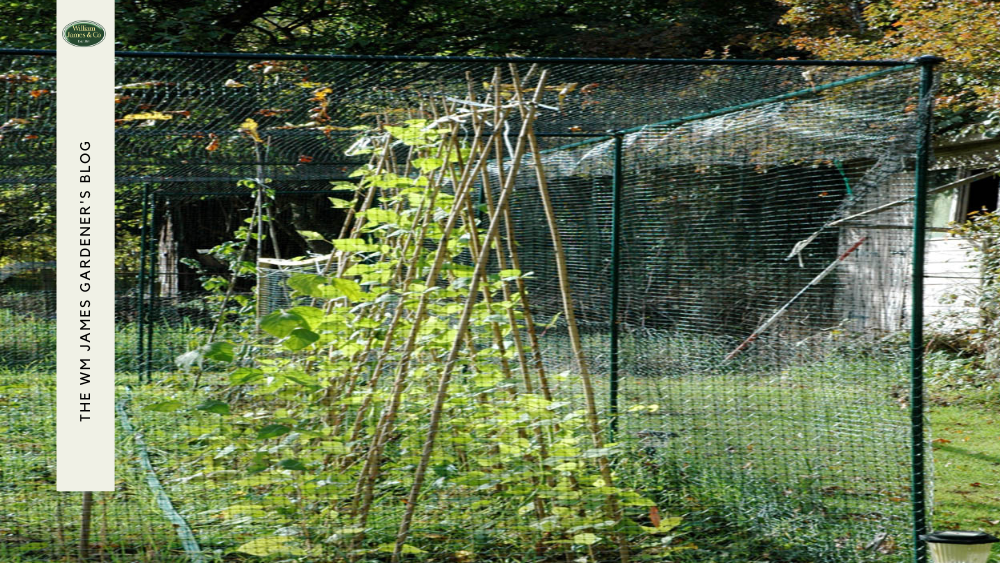We use cookies to make your experience better. To comply with the new e-Privacy directive, we need to ask for your consent to set the cookies. Learn more.
8 Best Vegetables to Grow in December
- Admin
- WM James Gardening Blog
- 11 Jun 2024
-
55views

Planting vegetables in December is a great way to keep yourself moving and busy during the winter months.
There are plenty of crops that can withstand the cold temperatures and even thrive in winter conditions, and they’re very easy to grow.
Whether you have a big garden or allotment or just a few raised planters on a balcony, we’ve got a list of 8 best vegetables that can be grown in December.
So, grab your gardening gloves, your trowel, and your woolly scarf and let’s get growing!
|
In this guide, we'll look at:
|
Popular Vegetables to Grow in December
The veggies you plant in December can be harvested in early spring, providing you with fresh and delicious produce when the rest of your garden is still waking up from its winter slumber.
These are the 8 vegetables we find ourselves planting every December…
| Vegetables to Grow in December | When to Harvest |
| Kale | When plants are 10-15cm tall |
| Carrots | 12-16 weeks after sowing |
| Spinach | When leaves reach 5 inches in size |
| Radishes | When roots are 2.5cm in diameter |
| Asian Greens | 45-75 days after sowing |
| Leeks | 2 months after sowing for baby leeks, 4 months for larger leeks |
| Parsley and Chives | When 5-10 main stems have grown |
| Broccoli | When the main head stops growing |
1. Hardy Kale
Hardy Kale is a staple in many winter gardens, and for good reason. It can withstand cold temperatures and even snow, making it the perfect choice for planting in December.
Plus, its deep green leaves are packed with nutrients and can be used in various dishes such as salads, soups, and stir-fry recipes.
|
Compact Dwarf Siberian kale varieties suit container growing limitations and can be generously productive. Plant into multipurpose compost enriched formulations or quality potting soil mixed beforehand. |
Expect your potted yields to generate a lot of vitamin-rich leaves that are perfect ingredients for soups, salads and stir-fries after about six to eight weeks.
Shelter your containers against heavy rain to prevent the soil from leeching nutrients. You could consider a cloche for this as they can provide protection while still allowing sunlight to reach the plants.
2. Weather Resilient Carrots
Sturdy Napoli, Amsterdam Forcing, and Purple Haze seed varieties can mature before the frost damages root formations.
Sow bi-weekly indoors from December through February to protect the young plants, and then transfer into dug garden beds with enriched compost mixed deeply. Water thoroughly until shoots appear, then space plants precisely as they start growing.
Sow seeds earlier indoors in planting trays first before taking them outside from January onwards, allowing developing tops enough time to establish themselves before being exposed to heavier frosts experienced as winter deepens.
Use deep containers like drainage-punctured bottomless buckets or rectangular boxes to allow straight taproot descents. Check your containers have drainage holes to prevent waterlogging.
Transfer young plants and space them 10-12cm apart to give them enough room to grow.
3. Nutrient-Rich Spinach
Spinach is a good veggie to grow in December as it can tolerate cooler temperatures. Not to mention, it’s a versatile and nutritious addition to any meal!
Spread seeds across trays indoors on heating mats first, then put them into polytunnel beds.
You want a spread of leaves rather than singular stems, so space specimens 2 inches apart, ideally in all directions. Allow most leaves to reach 5 inches in size before harvesting by twisting and pulling to avoid stem damage and slowing further production.
4. Poly Tunnel Radishes
Quick-growing radish selections are perfect for impatient winter gardeners! You’ll be able to see crisp bulbs ready for pulling just three weeks after your early plantings with the protection of your poly tunnel from December onwards.
|
Sow Champion, French Breakfast or White Icicle heirlooms are recommended highly. For spice lovers, Watermelon varieties add eye-catching colour possibilities otherwise lacking during darker winter months. |
Polytunnels and cold frames are ideal for shielding delicate crops against persistent chilling, biting winds or frosts. Position enclosed beds near south-facing walls to soak up sunlight, providing nurturing warmth.
5. Asian Greens
Trying lush Asian vegetables expands your winter repertoire beyond starchy roots. Noteworthy Pak Choi, Tatsoi or Mizuna thrive when started in December. They’ll typically be ready for harvesting around 45 days later.
The Best Garden Fleece Nets for Winter Gardening
You’ll need to protect these with garden fleece to keep them shielded against the sometimes harsh weather.
Our Horticultural Garden Fleece is perfect for this as it can be easily draped over your plants, creating a protective barrier while still allowing air and moisture to circulate.
You can purchase this net by the metre, allowing you to get the exact amount you need for your garden beds. Be sure to anchor it securely so it doesn't blow away or get damaged – we also stock pegs and net clips for this!
6. Ever-Ready Leeks
Leek seeds can be started indoors in December and then transplanted into your garden beds once they have germinated.
You should sow them around 8 inches apart, which should give them plenty of room to grow. It's also a good idea to keep the soil moist but not waterlogged during their growing period.
Again, a plant fleece will be essential for when you move them outdoors to protect them from pests and harsh weather conditions.
7. Parsely & Chives
Beyond hardy vegetables, herbs flourish too! Curly-leaved parsley strains thrive inside partially sunny windowsills, while chives can line porch planters to give chefs easy access to tasty seasoning.
Though herbs play supporting roles in the kitchen, their cultivation proves marginally more straightforward than those vegetables discussed earlier. They allow kitchen gardeners to practice their green thumbs or younger gardeners to try gardening basics.
With little heat protection and shallow rooting depths (as long as they’re kept moist), both parsley and chives adapt to container confinement splendidly.
You can pretty much grow herbs on any windowsill, and you can grow plenty outside as long as the area is covered to keep the rain off!
8. Sweeter Sprouting Broccolis
Red Fire and White Sprouting broccoli varieties deliver a lot of rewards for December green thumbs, so attempt sprouting broccolis today!
Space each deep-rooted specimen generously at 24-30 inches apart to maximise per-plant productivity. A lot of beginners will clump their broccoli plants too close together and it’s not going to end well.
Apply balanced feed formulations to boost your bud-setting success rates. Shelter plants using garden fleece during plunging temperatures or storms.
Summary: Grow Tasty Veggies in December With WM James
Planting vegetables in December is a surefire way to lift your spirits and give you something to look forward to as the year comes to a close.
Use our list above and take note of our tips to ensure a successful harvest for your winter garden.
Don’t forget to grab your garden plant fleeces to keep your crops protected from the chilly weather! We have a super range of covers that will keep your veggies snug and happy through the winter months.
FAQs
What Fruit Can You Grow in December?
Berries are a great option for December planting, as they grow well in colder weather. Strawberries and raspberries are particularly suitable for this time of year, as are bare-root trees and bushes.
What is the Best Vegetable to Grow in the Winter?
Leafy greens are among the best vegetables to grow as they can survive the harsh winter conditions.
What Onions Grow Best in the Winter?
Spring Onions are a good choice for December. They are fast-maturing and able to withstand colder temperatures.



















